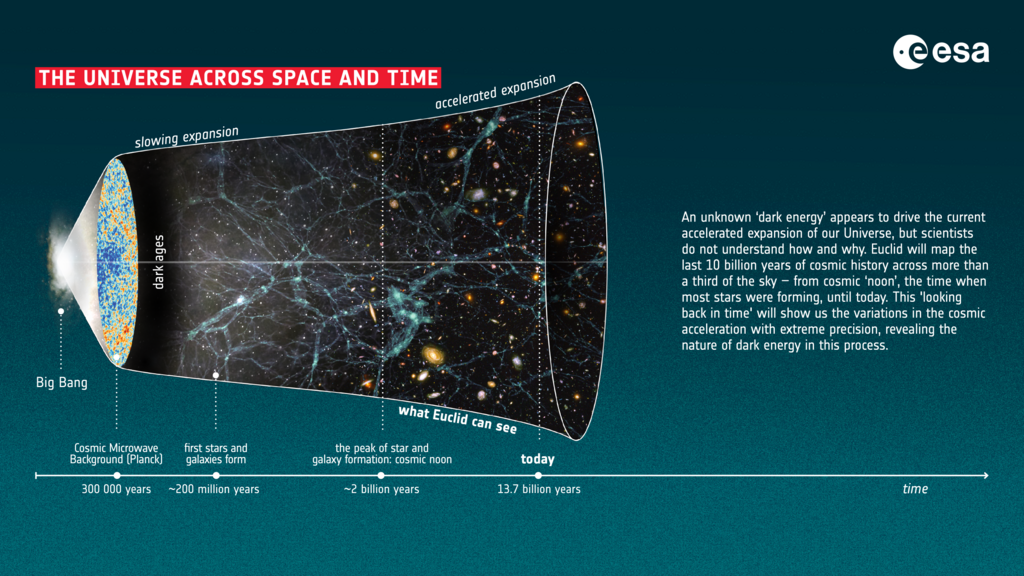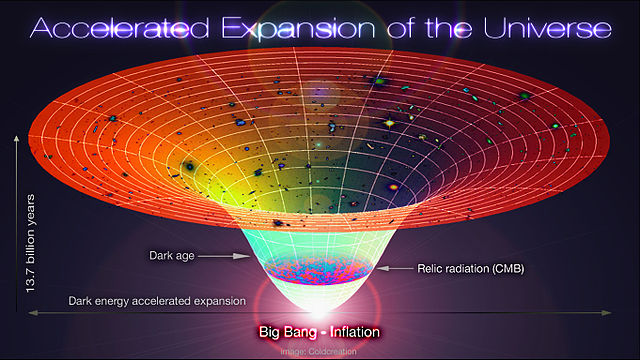The paradigm (i.e.,
a grand vaguely specified theory)
of inflation
was introduced in
1979--1981
and significant evidence as accrued for it.
But alternative theories exist.
By the by,
the false vacuum universe
may also be the
multiverse.
But that is a very speculative theory.
Maybe
theory of everything (TOE)
(if it is ever discovered)
will prove or disprove the multiverse
paradigm.
Immediately after this phase,
mass-energy
of the observable universe
consisted of the
matter
(i.e., the aforementioned
primoridal light elements),
cosmic background radiation (CBR)
(which was
a blackbody radiation field in
in thermodynamic equilibrium
with the matter),
cosmic neutrino background,
dark matter and
and dark energy
(which is a name for our ignorance of the cause of the
accelerating universe).
The fluctuations led to clumping where
density was high and declumping where it
was low
It was a case of the rich getting richer and the poor getting poorer.
The overall process is called
structure formation (AKA large-scale structure formation).
Structure formation
created
galaxies,
galaxy clusters,
galaxy superclusters,
galaxy filaments,
and cosmic voids:
i.e., all the
large-scale structure of the universe
which nowadays is often called
cosmic web
which is NOT quite a synonym for
large-scale structure since it is the
particular
form of large-scale structure
we actually have.
The galaxies,
in fact, formed in
gravitational wells
of dark matter which
we call dark matter halos.
Of course, in the
galaxies, there was
star formation.
The expansion of the universe
continues to spread apart
gravitationally unbound
systems.
Within
gravitationally bound
systems
(i.e., galaxies and
galaxy clusters),
the
galaxies continue to
evolve by galaxy mergers
and
galaxy quenching
(i.e., the turning off of star formation).
See
galaxy formation and evolution.
UNDER CONSTRUCTION BELOW
The Big Bang and evolution since then form a well
established theory: it would be extremely surprising if that theory were just plain wrong.
Cosmic evolution before the Big Bang
(i.e., the multiverse and
inflation) is
much more speculative---one of those deep mysteries of modern physics.
It wouldn't be extremely surprising if
the multiverse and
inflation were just plain wrong.
Theories have different statuses as mentioned above.
 Features Extended:
Features Extended:

